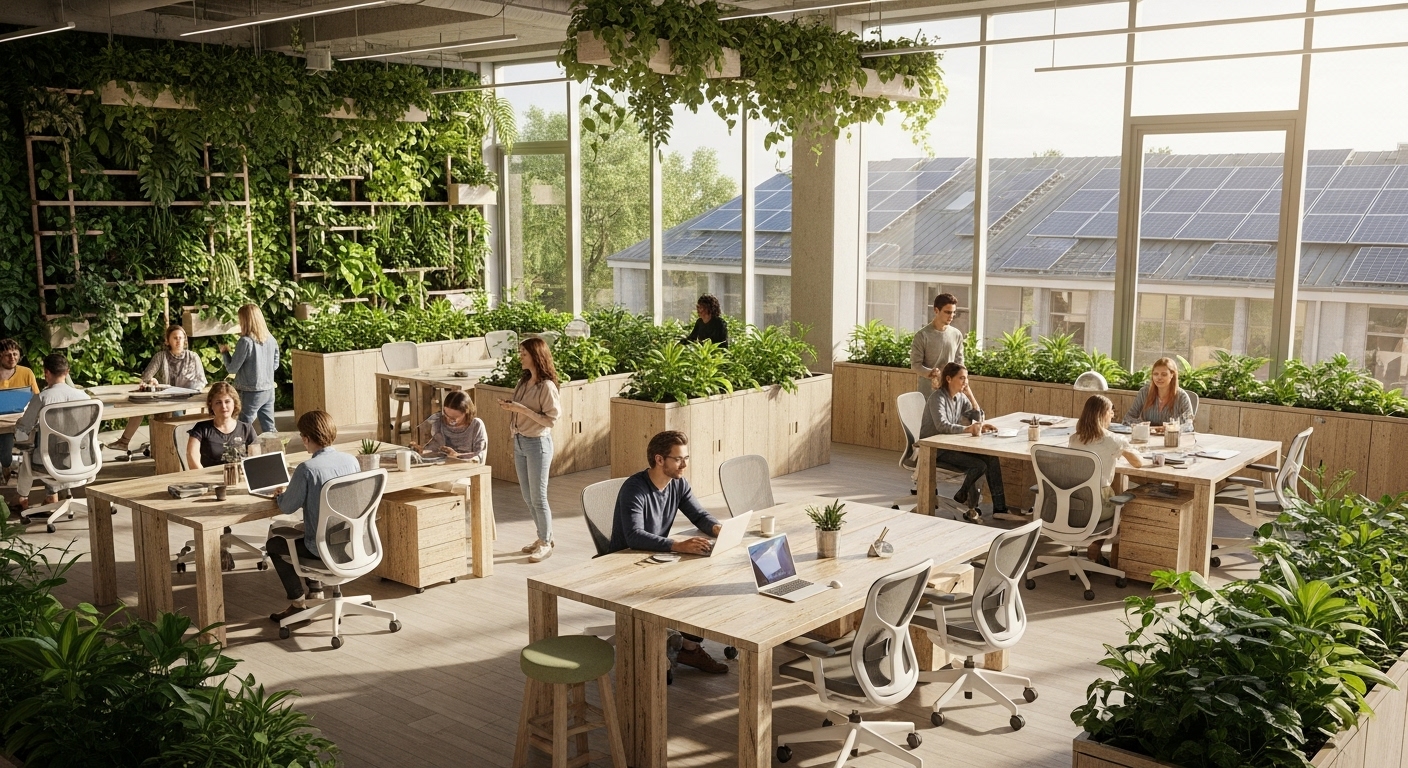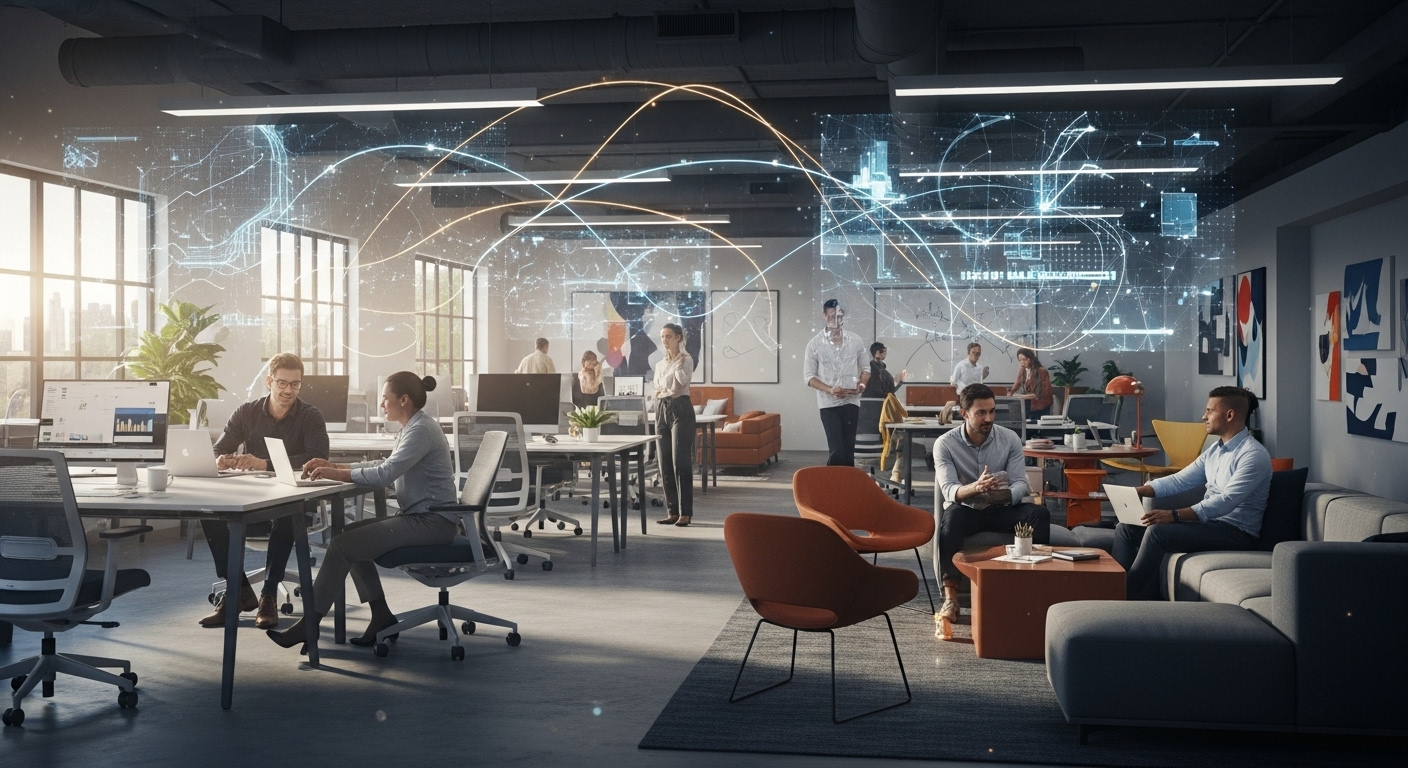In today’s business landscape, sustainability has evolved from a corporate buzzword into a strategic imperative. For forward-thinking leaders, the concept of a sustainable workspace is no longer confined to adding a few recycling bins and potted plants. It represents a comprehensive, end-to-end operational philosophy that touches every aspect of the business, from initial procurement decisions to daily employee workflows. The shift towards greener offices is driven by a convergence of factors: rising energy costs, increasing consumer and employee demand for corporate responsibility, and a growing body of evidence linking sustainable design to improved productivity and well-being. This guide moves beyond the surface-level gestures to provide a strategic blueprint for building and operating a truly sustainable workspace. We will explore the critical pillars of this approach, including strategic material sourcing, intelligent energy management, implementing a circular economy, fostering a green culture, and ultimately, measuring the tangible return on this crucial investment. It’s a journey from thoughtful sourcing to operational synergy, creating an environment that benefits people, the planet, and profits alike.
The Foundation: Strategic Sourcing and Sustainable Procurement
The journey to a sustainable workspace begins long before the first employee walks through the door; it starts with the supply chain. Strategic sourcing and procurement are the foundational elements that determine a building’s environmental impact over its entire lifecycle. Instead of prioritizing cost alone, a sustainable approach evaluates materials based on their origin, composition, and end-of-life potential. This means actively seeking out materials with a low environmental footprint, such as reclaimed wood, recycled steel, bamboo flooring, and low-VOC (Volatile Organic Compound) paints, which improve indoor air quality. Certifications serve as a vital guide in this process. Look for standards like the Forest Stewardship Council (FSC) for wood products, ensuring they come from responsibly managed forests, or the Cradle to Cradle certification, which assesses products on material health, recyclability, and manufacturing ethics. The principle extends to furniture and fixtures. Partnering with local artisans and manufacturers not only supports the local economy but also significantly reduces the carbon emissions associated with long-distance transportation. Furthermore, consider the entire lifecycle assessment (LCA) of a product. This analysis evaluates the environmental impact of an item from raw material extraction to its final disposal, enabling more informed and responsible purchasing decisions. By embedding sustainability into procurement, you create a physical environment that is inherently healthier, more resilient, and aligned with core corporate values from the ground up.
Powering Productivity: Intelligent Energy and Water Management
Once the physical space is constructed with sustainable materials, the focus shifts to operational efficiency. Energy and water consumption are two of the largest components of a workspace’s ongoing environmental footprint and operating costs. Intelligent resource management is therefore a critical lever for both sustainability and profitability. While switching to LED lighting is a well-known first step, a truly smart approach goes much further. Implementing motion-sensor lighting in low-traffic areas like conference rooms and restrooms ensures electricity is only used when needed. Similarly, smart HVAC systems integrated with building occupancy sensors can adjust heating and cooling in real-time, preventing the enormous energy waste from conditioning empty spaces. Beyond conservation, consider energy generation. The installation of solar panels on rooftops or even as architectural elements can significantly offset electricity costs and reduce reliance on the grid. Many regions offer tax credits and incentives that can make this a financially astute investment. Water management follows a similar principle of ‘reduce and reuse.’ Installing low-flow faucets, aerators, and dual-flush toilets can cut water consumption by over 50%. In suitable climates, rainwater harvesting systems can capture water for non-potable uses like irrigation for landscaping and flushing toilets, further closing the resource loop and demonstrating a deep commitment to conservation.
Closing the Loop: Implementing a Circular Economy Model
The traditional linear economic model of ‘take-make-dispose’ is a primary driver of resource depletion and waste. A truly sustainable workspace champions a circular economy, designing out waste and pollution from the outset. This requires a fundamental shift in how we view materials and products, treating them not as disposable but as valuable resources to be kept in circulation for as long as possible. Going beyond standard recycling bins for paper and plastic is essential. A comprehensive program should include designated collection for e-waste, batteries, and printer cartridges, ensuring these hazardous materials are disposed of responsibly. Implementing a composting system for organic waste from office kitchens can divert a significant amount of material from landfills while creating nutrient-rich soil. Another powerful circular strategy is to rethink ownership. The ‘product-as-a-service’ model is gaining traction, where companies lease items like furniture, lighting, or printing equipment. Under this model, the manufacturer retains ownership and is responsible for maintenance, upgrades, and end-of-life recycling or refurbishment. This incentivizes them to design durable, easily repairable products and absolves your company of disposal challenges. Embracing upcycling—transforming old office furniture or materials into new, valuable items—can also be a creative way to reduce waste and add unique character to the workspace.
The Human Element: Cultivating a Culture of Sustainability
A beautifully designed, energy-efficient workspace can only achieve its full potential if the people within it are engaged and committed to its goals. Technology and infrastructure are enablers, but culture is the engine of sustainable practice. Fostering this culture requires clear communication, education, and employee empowerment. Start by forming a voluntary ‘Green Team’ or sustainability committee composed of passionate employees from different departments. This team can lead initiatives, organize events, and act as ambassadors for the company’s green mission. Education is crucial. Many employees may not be aware of the ‘why’ behind certain policies. Host workshops on proper recycling, run awareness campaigns on energy and water conservation, and share regular updates on the company’s progress toward its sustainability targets. This transparency builds trust and a sense of shared purpose. Gamification can also be a powerful tool; launching inter-departmental competitions to reduce waste or energy use can create a fun and collaborative atmosphere. Critically, link sustainability efforts to employee well-being. Communicate how improved air quality from low-VOC materials and abundant plant life, or enhanced natural light, directly contribute to a healthier and more productive work environment. When employees see sustainability as a direct benefit to their own daily experience, they transition from passive participants to active champions of the cause.
The Tech Advantage: Leveraging Smart Building Technology for Green Goals
Technology acts as the central nervous system of a modern sustainable workspace, providing the data and automation needed to optimize resource use with unparalleled precision. Smart building technology, particularly the Internet of Things (IoT), transforms a static office into a responsive, intelligent environment. IoT sensors can be deployed to monitor a vast range of environmental data in real-time. For instance, sensors can track room occupancy, temperature, humidity, CO2 levels, and natural light availability. This data is fed into a central Building Management System (BMS), which can then make automated, intelligent decisions. If a conference room is empty, the BMS can dim the lights and set back the thermostat. If CO2 levels rise in a densely populated area, it can automatically increase ventilation to improve air quality and cognitive function. This level of granular control ensures that resources are allocated precisely where and when they are needed, eliminating human error and systemic waste. Smart metering provides detailed analytics on electricity and water consumption, allowing facility managers to identify anomalies, pinpoint inefficiencies, and track the impact of conservation initiatives over time. By leveraging technology, sustainability moves from a set of manual policies to a seamless, automated, and data-driven operational standard that enhances both efficiency and the employee experience.
Measuring What Matters: The ROI of a Sustainable Workspace
For any major business initiative to be viable, it must demonstrate a clear return on investment (ROI). While the ethical and environmental arguments for sustainability are compelling, the business case is equally strong. The ROI of a sustainable workspace is multifaceted, comprising both tangible financial savings and significant intangible benefits. The most direct financial returns come from operational efficiencies. Reduced energy and water consumption translate directly to lower utility bills, often yielding savings of 20-40%. Sustainable procurement practices, such as choosing durable and repairable furniture, lower long-term replacement costs. Furthermore, many governments offer tax credits, grants, and other incentives for buildings that meet green certification standards like LEED or BREEAM, further strengthening the financial argument. However, the intangible ROI is where sustainable workspaces truly shine. In a competitive labor market, a demonstrable commitment to sustainability is a powerful tool for attracting and retaining top talent, particularly among younger generations who prioritize corporate responsibility. Studies have consistently shown that features of green buildings—such as improved air quality, thermal comfort, and access to natural light—can increase employee productivity by over 10% and reduce absenteeism. This boost in human capital, combined with an enhanced brand reputation, creates a powerful competitive advantage that drives long-term value far beyond simple cost savings.
Conclusion
Creating a sustainable workspace is a holistic endeavor that weaves environmental responsibility into the very fabric of an organization. It is a strategic shift from the outdated, linear model of consumption to a dynamic, circular system that values efficiency, well-being, and resilience. The journey begins with the foundational choices made in procurement and sourcing, ensuring the materials that build the space are as healthy and low-impact as possible. It extends through the intelligent management of energy and water, leveraging technology to eliminate waste and reduce operational costs. It thrives by closing the loop through a circular economy model and, most importantly, by fostering an engaged culture where every employee is a stakeholder in the company’s green mission. The benefits of this approach are clear and compelling. Beyond the crucial contribution to a healthier planet, sustainable workspaces deliver a powerful return on investment through lower operating expenses, enhanced brand equity, and a significant boost in employee productivity, health, and morale. In the evolving landscape of the future of work, sustainability is not an optional extra; it is the cornerstone of a forward-thinking, high-performing, and truly prosperous organization. It is an investment in a better future for your business and the world it inhabits.





